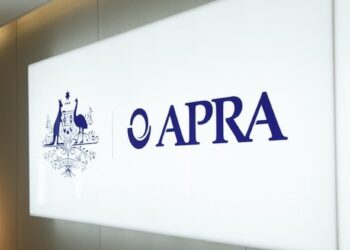Describing Australia’s superannuation system as a “growing component” of the financial system, APRA has shared a number of strategic priorities regarding this sector over the next four years.
In its latest corporate plan covering the period to 2027–28, it has flagged retirement income as being top of mind among industry-specific challenges.
This will sit alongside strategic objectives like maintaining financial, operational, and cyber resilience; crisis preparedness; climate and nature risk; and new and changing business models.
“Australia’s superannuation system is a large and growing component of the financial system – managing the long-term savings of members during their working lives, delivering income for retirees and playing an important role in funding economic activity,” APRA said.
“APRA will continue to support improved outcomes for members by increasing transparency on performance, fees and fund expenses.
“APRA will also maintain its focus on the supervision of trustees’ approaches to investment governance and improving their members’ retirement outcomes.”
The regulator said retirement income decisions can be “complex” for superannuation members, with the government’s Retirement Income Review highlighting the retirement phase of the superannuation is “underdeveloped” and most retirees are not currently supported to effectively manage their superannuation when they retire.
“Once a member reaches retirement, moving their superannuation balance to the retirement phase requires an active choice, sometimes involving difficult trade-offs,” APRA said.
To address this, its regulatory activities will include:
- Working with ASIC to monitor and drive industry progress in improving the retirement outcomes and customer experience of super members.
- Engaging with individual trustees where APRA holds concern about lack of progress being made to effectively implement the Retirement Income Covenant.
- Leveraging ongoing supervisory activities to engage with trustees more broadly on retirement-related matters to drive continuous improvements.
- Continuing to engage with life insurance industry to explore ways to reduce barriers for insurers to provide and/or further innovate longevity solutions.
“Over the course of this plan, APRA will assess the costs, benefits and capacity of trustees of enhanced data collections for retirement,” it said.
Additionally, in supervising financial resilience in the super sector, APRA said it will conduct a system stress test that includes a small number of large superannuation funds.
This will involve a design phase in the first half of the financial year 2024-25 and be executed with entities in the second half of FY24-25. The specific entities are yet to be determined.
APRA also said it will finalise thematic work in relation to unlisted assets, liquidity stress preparedness, and the internalisation of investments. As part of this, it will conduct a review of trustees’ investment governance practices for a subset of choice products.
According to APRA chair John Lonsdale, the latest corporate plan is targeted towards ensuring continued financial and operational resilience of APRA-regulated entities, while also responding to new and heightened risks.
“At a time of considerable geopolitical volatility and with an uncertain economic outlook, it’s vital that banks, insurers and superannuation trustees are prepared for whatever potential challenges could arise,” he said.




